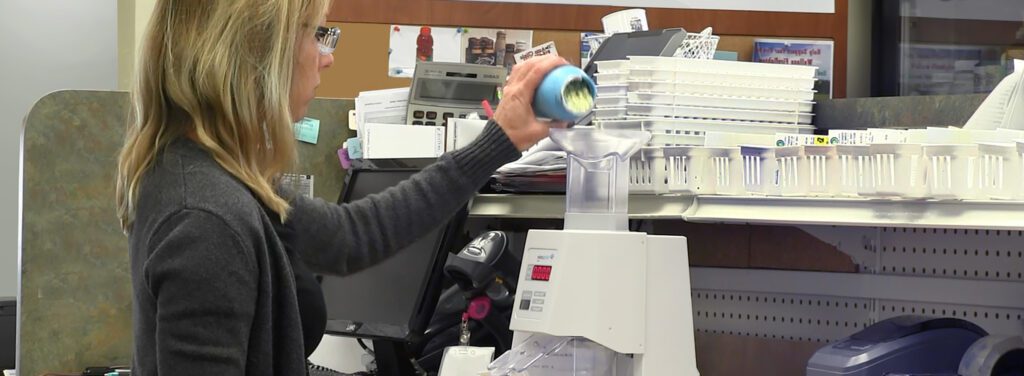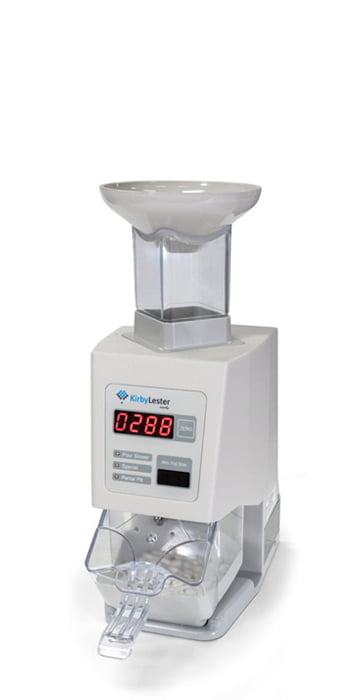
Q: Are weigh scales or tray-and-spatula counting adequate methods for spot-checking product quantities during QC?
A: No, for quality control (QC) on tablet and capsule production lines and for inventory checks in a manufacturing setting, you may want to replace outdated counting methods with more modern and versatile semi-automatic counting machines. A small, tabletop, tablet counting device like the Kirby Lester KL1 is lightweight, mobile, and affordable, and can fill a variety of counting needs in a manufacturing setting or lab. Most important, this semi-automatic counting device outperform manual or outdated counting methods such as the weigh scale, plastic tray and spatula, or roller board or pegboard.

Continuing to use an older QC method because it’s inexpensive or because it’s the method that the company has always used isn’t valid in today’s precision-first manufacturing environment. Outdated manual counting methods or weigh scales are 25-50 percent slower than semi-automatic counting devices and are 95 percent accurate at best. In fact, tray-and-spatula or scale accuracy rate plummets when:
Such factors don’t negatively affect modern counting machines like the Kirby Lester KL1.

The KL1 is the gold standard for fast, simple QC or inventory counting in manufacturing settings. The device includes high-tech internal sensors to read each tablet or capsule as a piece of data and rapidly calculate the number that pass the sensors. The KL1 effectively eliminates the chance for human error. At less than 7 pounds, it is small enough to sit on a work surface or be attached to a mobile cart and requires only a standard electrical outlet.
The KL1 is useful anywhere tablets/capsules or small objects (smaller than 0.89″) must be accurately inventory-counted or bottled. (Minimum pill diameter is 0.125″ / 3.175mm; Maximum pill size 0.86” long/22mm and 0.74” wide/19mm.) Often, the device is placed alongside full-scale bottle-filling lines. Applications include:
Consider these factors when there is a need for accurate piece-counting in a manufacturing setting:
For more on industrial setting tablet/capsule handling, see Tablets & Capsules.